Welcome to my blog, where we shall explore the fascinating topic of Catfacing In Tomatoes. As a tomato farmer, you may have heard this phrase before, but do you really know what it means and how it impacts your plants?
We’ll look at catfacing in tomatoes and its description, causes, effects, detection, and prevention in this blog. Now, let’s don our professional hats and explore this crucial subject for all tomato growers.
Also Read: How To Do Raised Bed Gardening?
Catfacing In Tomatoes
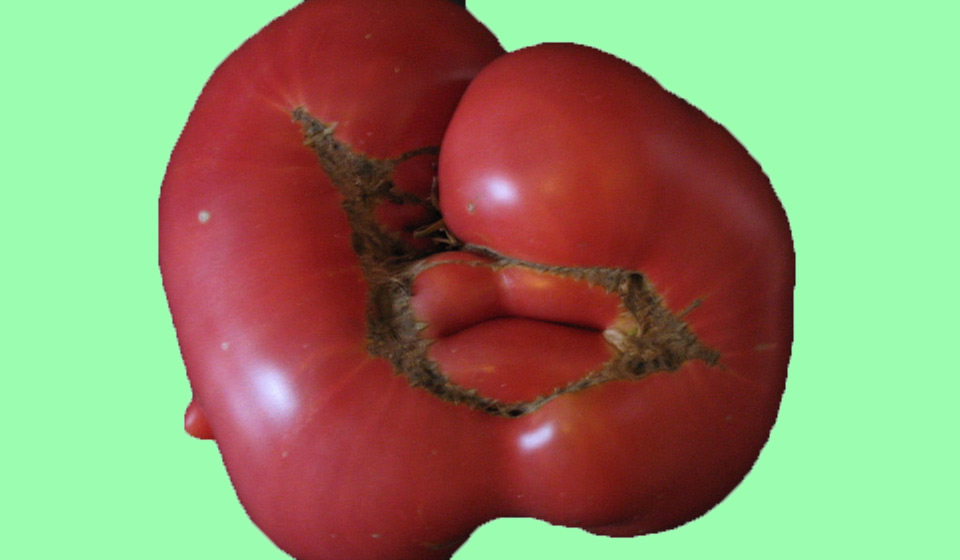
Tomatoes are susceptible to a frequent condition called catfacing, which results in malformations on the fruit. It is a physiological ailment brought on by internal causes instead of external ones like illnesses or pests.
The phrase “catfacing” refers to how the fruit that is impacted resembles a cat’s face, complete with deep indentations and scars. This disease can affect tomato plants cultivated in the home or commercial settings, and it can significantly affect the development and yield of the plant.
Characteristics of catfacing in tomatoes
The fruit appears deformed due to extensive scars and indentations caused by the catfacing process. These scars may cover a small or significant area of the fruit’s surface and be shallow or deep.
In addition, the fruit may develop unevenly or irregularly, and the afflicted portions may feel rough or corky. The fruit can be entirely deformed and unsafe to eat in extreme circumstances.
Also Read: 5 Essential Tools for Every Gardener
The Reasons Behind Catfacing
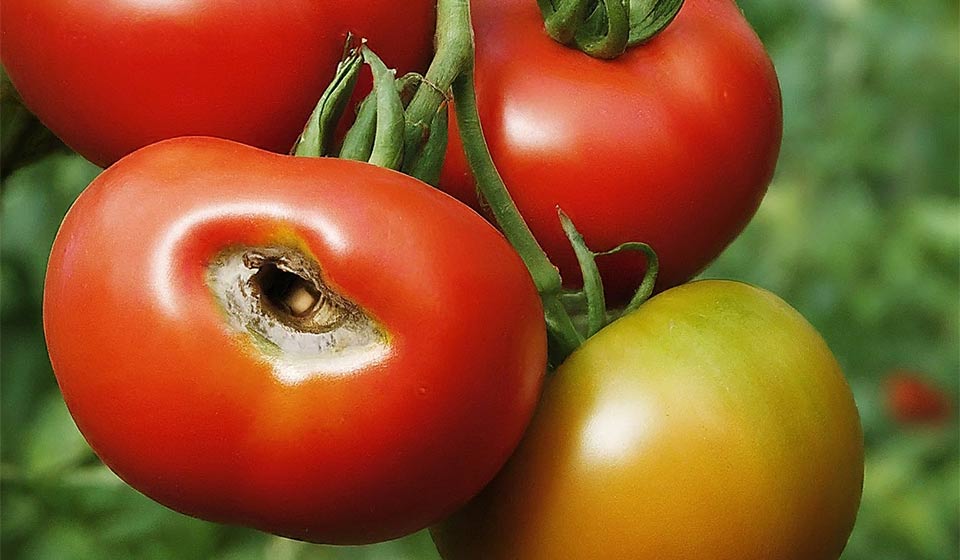
For tomato farmers, this is a difficult issue since it not only ruins the fruit’s beauty but also lowers its market value. Understanding the root causes of catfacing is crucial for managing and preventing it successfully.
This section will cover the several elements that cause catfacing in tomatoes. Let’s go ahead!
i). Environmental factors
Catfacing development in tomatoes is significantly influenced by environmental conditions. Temperature variations are one of the primary reasons.
Catfacing can occur when tomato plants undergo abrupt temperature swings, particularly when the fruit is setting. Excessive heat can induce malformations by interfering with the fruit’s natural growth and development.
ii). Moisture / Wetness
Wetness stress is another significant environmental component. Consistent and sufficient moisture is necessary for tomato plants to produce their fruits properly.
Lack of water can cause uneven fruit development, which might result in catfacing. However, as it can cause the fruit to break, too much moisture can also result in catfacing.
Also Read: Multifaceted Benefits of Raised Bed Gardening
iii). Genetic factors
Not all tomato types are equally prone to catfacing. Some types are predisposed to this illness because of their genetic composition.
Specific genes in these types increase their sensitivity to environmental variables that might induce catfacing. For example, heritage tomatoes are more prone to catfacing than hybrid kinds.
iv). Cultural behaviors
Excessive trimming is a prevalent cultural practice that increases the danger of catfacing. Pruning can limit the number of leaves on the plant that provide shade and protection for the fruit.
Without adequate leaf protection, the fruit is more exposed to the sun and other environmental variables, which increases the likelihood of catfacing.
v). Overfertilization
Overfertilization is another cultural practice that can result in catfacing. When tomato plants get too much nitrogen fertilizer, they might experience fast vegetative development, making the fruit more vulnerable to catfacing.
Furthermore, excessive pesticide usage might promote the development of catfacing in tomatoes.
Also Read; Best Tips To Do Container Gardening
Impact of Catfacing on Tomato Plants
Catfacing has severe consequences for both the plant and the marketability of tomatoes. Here, we’ll look at how catfacing affects tomato plants economically and aesthetically.
Effects on Plant Growth and Yield
Catfacing can significantly affect tomato plant growth and productivity. Catfacing can induce abnormalities that damage the plant’s health, resulting in diminished growth and output.
The afflicted fruit may also be smaller and of lesser quality, making it less appealing to customers.
The degree of catfacing varies, and the fruit may be entirely distorted and worthless in extreme situations. This can lead to a significant loss of output for tomato producers, reducing their revenues and livelihood.
Economic Impact on Tomato Growers
Furthermore, catfacing might raise production expenses for farmers. They may need to invest in additional resources to prevent and manage the condition, such as specific fertilizers or cultural traditions that mitigate its consequences.
These extra costs may have an even more significant impact on tomato production profitability.
Also Read: A Guide To Grow Spinach In Pots
Aesthetic Effect on Consumers and Marketability of Tomatoes
Catfacing, in addition to its economic influence, can impact tomato aesthetics. Consumers may need help finding the misshapen fruit physically appealing, making them less inclined to buy it.
This might lead to a fall in demand for tomatoes, generating a ripple effect throughout the market.
Furthermore, the presence of catfacing in a batch of tomatoes might affect the overall marketability of the produce. Retailers may only accept the entire batch if they discover a large percentage of damaged fruit, resulting in huge losses for producers.
Also Read: How to Grow Tomatoes at Home in Pots (Full Detail)
Identifying Catfacing in Tomatoes
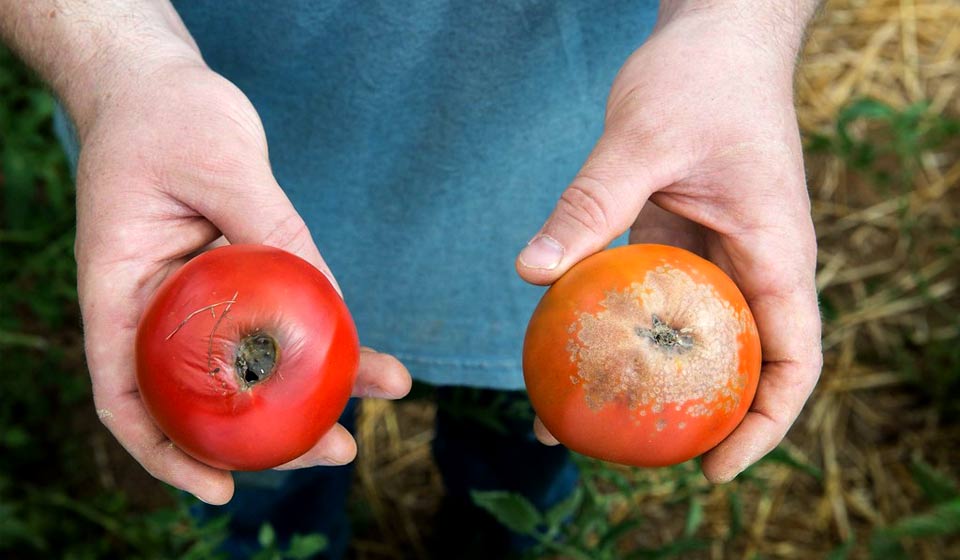
Tomatoes are a popular and adaptable produce enjoyed by both growers and consumers. However, tomato plants are vulnerable to various illnesses and diseases that can limit their development and productivity.
Catfacing is one such condition that, if not addressed, may cause substantial harm to tomato plants. In this chapter, we’ll look at the signs and symptoms of catfacing in tomatoes and how to distinguish it from other illnesses.
Signs and symptoms to look out for
Catfacing in tomatoes is a physiological disease that creates malformations in the fruit, giving it a cat-like look. The damaged tomatoes have deep scars or grooves on their surface, giving them a twisted and malformed look.
These scars can be faint or deep, covering the entire fruit or only a portion.
Aside from its outward appearance, catfacing can give the fruit a lumpy or rough feel, making it undesirable to customers. In severe cases, affected tomatoes may develop cracks or splits, making them more prone to rot and other illnesses.
How to distinguish catface from other tomato disorders:
Catfacing in tomatoes can be confused for conditions like blossom end rot or bacterial spot. However, there are a few significant distinctions that might help distinguish catfacing from these diseases.
One of the primary distinctions is the location of the symptoms. Catfacing attacks the entire fruit, whereas blossom end rot often develops at the bottom of the fruit. Conversely, bacterial stain generates black patches on the leaves and stems, not the fruit.
Another significant feature is the etiology of the disease. Catfacing is a physiological problem induced by environmental or hereditary causes, whereas blossom end rot results from a calcium deficit in the plant.
Also Read: Fast-Growing Intercrops Vegetables: A Complete Guide
Prevention and Management of Catfacing
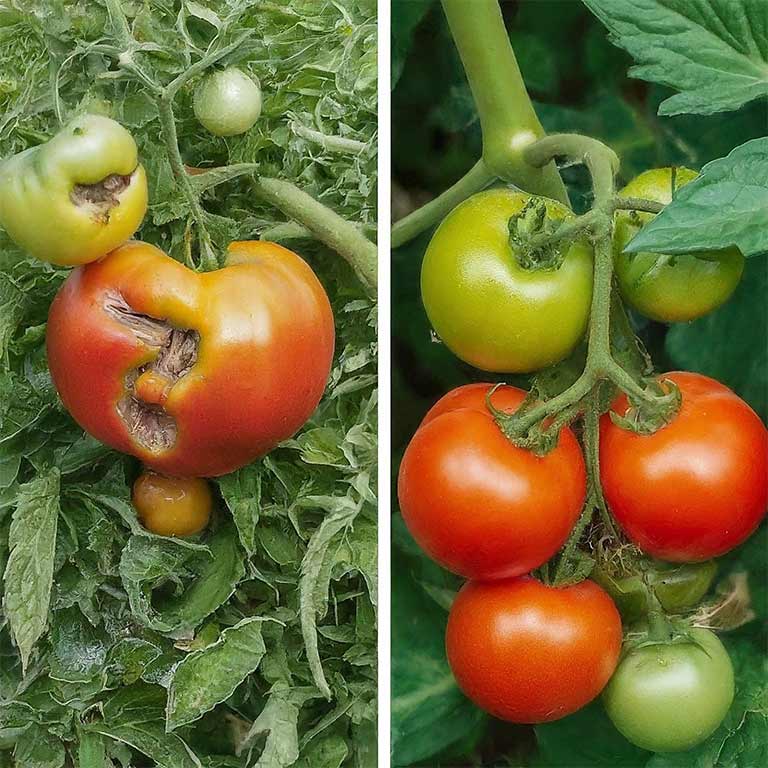
This condition, often known as “cat’s face” or “zippering,” can severely harm your tomato crop and result in lower yields. Here, we will look at several ways to avoid catfacing in tomato plants and management measures for afflicted plants.
Tips to avoid catfacing in tomato plants
1. Select the appropriate kinds: Certain tomato cultivars are more prone to catfacing than others. When picking tomato seeds or seedlings, aim for types with a lower frequency of catfacing. This drastically reduces the likelihood of your plants acquiring this condition.
2. Maintain regular soil moisture: Soil moisture fluctuations can lead to catfacing in tomato plants. To avoid this, water your plants frequently and moisten the soil. Avoid overwatering since this may also result in catfacing.
3. Avoid severe temperatures: Severe heat or cold can stress tomato plants, leaving them more vulnerable to catfacing. Keep your plants at 65 to 85 degrees Fahrenheit to avoid this condition.
4. Proper fertilization: Overfertilizing or applying the incorrect type of fertilizer can also lead to catfacing. Follow the specified fertilization parameters for your tomato variety. Avoid using nitrogen-rich fertilizers, which can lead to excessive vegetative growth and raise the danger of catfacing.
5. Prune and stake your plants: Proper pruning and staking help reduce catfacing in tomato plants. This improves air circulation and lowers the likelihood of fruit contacting the ground, which can result in damage and catfacing.
6. Mulch around plants: Mulching around tomato plants may help manage soil temperature and moisture levels, reducing plant stress and preventing catfacing.
Also Read: Fast Growing Vegetables in Pots
Management strategies for the impacted plants
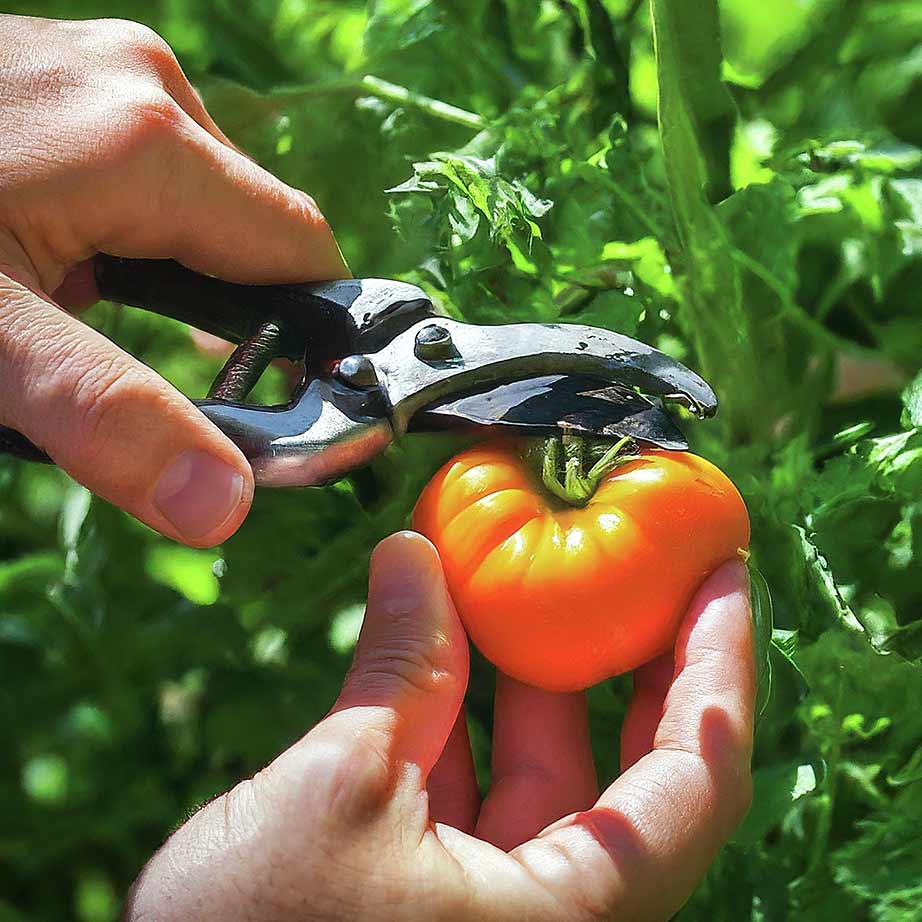
1. Remove infected fruits: If you see catfacing on your tomato plants, remove the damaged fruits as quickly as possible. This will keep the problem from spreading to other fruits and allow the plant to focus its energy on healthy fruits.
2. Maintain good plant nutrition: Fertilize your plants properly and supply them with the nutrients they need to recover from the stress of catfacing.
3. Control pests and diseases: Pests and diseases can also cause catfacing. Therefore, it is essential to inspect your plants regularly and take proper precautions to prevent infestations.
4. Use shade cloth: In locations with high temperatures, shade cloth can help protect tomato plants and lessen the danger of catfacing.
5. Consider grafting: Grafting tomato plants onto disease-resistant rootstocks can help avoid catfacing by providing more tolerance to stimuli that might cause this illness.
Also Read; How To Grow Cucumber In Pots At Home.
Conclusion
Catfacing is a frequent condition of tomato plants that causes malformations and distorted looks. It can degrade crop quality and productivity.
To minimize catfacing, producers should select less vulnerable types, maintain ideal conditions, monitor pests, implement sound cultural techniques, and be mindful of environmental influences.
Early detection and identification are critical to effective management. Symptoms include deep scars, indentations, and fissures.
Recent Posts
Here is reply of high-demand removable wallpapers. The wallpaper industry has changed a lot in recent times, with the launch of removable wallpaper being seen as a blessing for homeowners, renters,...
Brown is an often neglected color when considering interior design but brown decor living room ideas could make your house feel warm, sophisticated, and timeless. More adaptable than any other...

